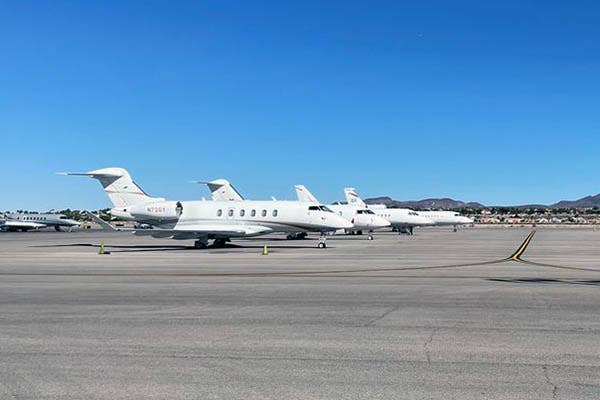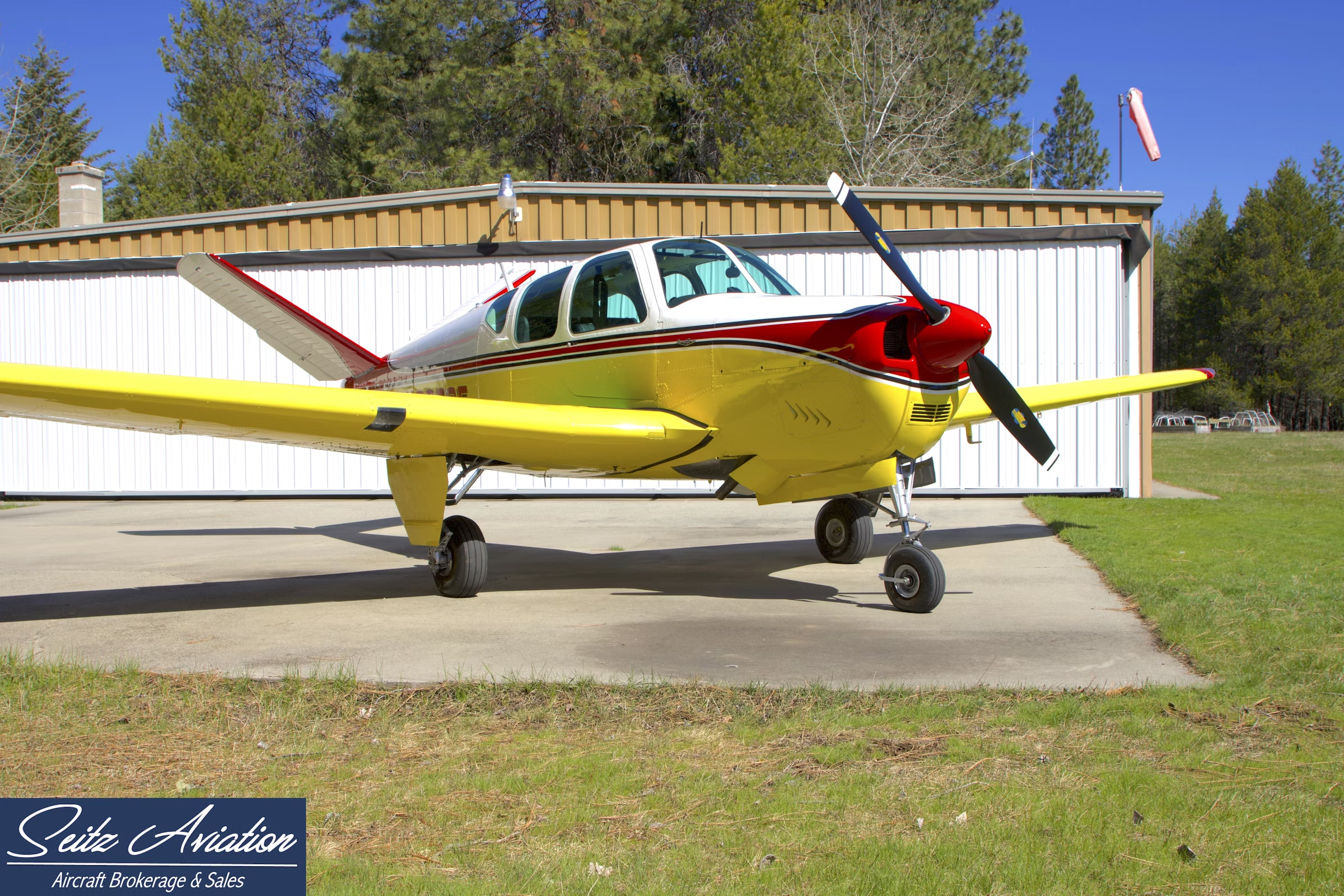
Larger jets continue to command the highest percentage of the market in Honeywell’s 30th annual Global Business Aviation Outlook. Julie Boatman
The business aviation industry continues its climb out from the effects of the coronavirus pandemic, according to a leading report released on Sunday.
Honeywell Aerospace reviewed its 30th annual Global Business Aviation Outlook on October 10, ahead of the National Business Aviation Association conference in Las Vegas, Nevada. The report projects 7,400 new jet deliveries totaling $238 billion over the next 10 years.
The totals reflect an increase of 1 percent over 2020 predictions.
The report is based in part on operator surveys conducted by Honeywell’s research team regarding plans for fleet renewal, projected utilization, and initial aircraft purchases.
The optimistic look towards aircraft acquisition is driven by the ongoing return to pre-pandemic levels of flying—operators surveyed expect flight hours in 2021 that will be 50 percent higher than those they tallied in 2020—with greater growth ahead for 2022.
New business jet deliveries in 2022 are expected to be up 10 percent, as few operators mentioned postponing their acquisition plans. In fact, 90 percent of survey respondents said the pandemic had not put off their deliveries of new or pre-owned jets.
“The increased demand for used jets is estimated at more than 6,500 units over the next five years, putting pressure on an already record low inventory and driving additional demand for new jets,” said Heath Patrick, president, Americas Aftermarket, Honeywell Aerospace.
“Our latest operator survey results support continued private jet usage growth, as more than 65 percent of respondents anticipate increased business jet usage in 2022,” said Patrick. “Despite the ongoing challenges presented by the pandemic, flight hours have recovered and grown beyond pre-pandemic levels.
Flying interviewed Javier Jimenez Serrano, who is the senior strategy analyst leading the research team behind Honeywell’s numbers, during a special preview.
“We’re still below the 10-year forecast [in deliveries from 2019] because of the delta variant,” said Serrano, but the company anticipates that the industry will be entirely back to 2019 numbers by mid-decade. Still, the operators surveyed have kept five-year plans a bit modest as a result of the delta variant’s lingering effects—though large changes were not in the cards.
“We interviewed over 1,500 operators, representing more than 14 percent of the global fleet,” said Serrano. “And they told us—90 percent of them told us—that they do not expect to make any changes or delay their purchase plans for new or used jets—that’s up from 80 percent last year. So we’re trending in the right direction here.”
What About Used Jets?
With charter operations leading the recovery, the pre-owned jet pool is expected to continue to decrease, said Serrano. Offsetting this will be the introduction of several new super midsize, large-cabin, and ultralong-range jets into the marketplace between 2022 and 2025—including the:
- Bombardier Global 3500
- Gulfstream G400, G700, and G800
- Dassault Falcon 6X and 10X
Planned purchases of used jets also remain strong, posting a 12-percent bump over 2020 figures—the equivalent of adding 800 more jets to corresponding business plans. “Operators worldwide indicated that 28 percent of their fleet is expected to be replaced or expanded by used jets over the next five years, up 3 percentage points compared with survey results from 2020,” the report said.
Regional Projections
By region, the 2021 report outlines the tempered resilience of the North American and Asia-Pacific markets.
Compared to 2020, plans over the next five years for acquisitions in the North America region are down by 3 percent as operators look ahead and face uncertainty driven by the delta variant.
New jet purchase plans in North America are down 3 percent in this year’s survey compared with last year. Over the next five years, at least 13 percent of the fleet is expected to be replaced or supplemented with a new jet purchase.
- Roughly 35 percent of responding operators plan to schedule their new purchases within the first two years of the five-year horizon. This is 3 percentage points higher than in last year’s survey, and above the worldwide average of 29 percent.
- Purchase plans for used jets are up 4 percent as compared to last year’s survey—and remain above historical averages.
- An estimated 63 percent of worldwide demand for new jets will come from the region during the next five years, down just 1 percentage point compared with the 2020 survey.
In Asia-Pacific, a similar picture emerges, with more plans for growth despite ongoing travel restrictions:
- Asia-Pacific operators have plans to replace at least 15 percent of their jet fleets over the next five years with new jet purchases, up from 14 percent in 2020′s survey.
- APAC operators also report fleet expansion intentions for the first time in three years, equating to 0.3 percent of the current fleet.
- Asia Pacific is projected to represent a 12-percent share of global new jet demand over the next five years.
- About 20 percent of respondents in APAC plan to schedule their new purchases within the first two years of the five-year horizon, compared with 30 percent just a year ago.
In Latin America, purchase plans have recovered to 2019 levels. Operators in Europe, however, continue to deal with cross-border restrictions and show a bit less optimism, with purchase plans down 5 percent. In the Middle East and Africa, the pessimism shows through a bit more, with the survey indicating a five-year low in expectations to buy.
A Look to the Future
Ed Bolen, president and CEO of NBAA, echoed Honeywell’s confidence in the industry’s resilience:
“Over the past year we have seen an incredible influx of new entrants into our marketplace. The benefits of business aviation are suddenly very real and tangible to people who hadn’t experienced it before.”
Bolen was part of a panel hosted by Honeywell at its release event at NBAA on Sunday evening, joining Stéphane Fymat, Honeywell’s vice president and general manager of urban air mobility and UAS, and Geoffrey Richardson, chief financial officer of Lilium, pioneering eVTOL manufacturer.
Fymat has led the dedicated unit for a little more than a year, and he highlighted the biggest accomplishment and challenge so far.
“In terms of the biggest accomplishment, we really set out not just to create a business unit within Honeywell, but to make this happen in the industry. We set out to evangelize, to provide thought leadership—and a year and a half later I’d say we’ve definitely made huge strides in that.”
“The most important thing is that we’ve been able to partner with leading innovative aircraft designers like Lilium…to help them bring their vision forward. Their vehicles are not possible without things like fly-by-wire systems. They are not possible without light avionics systems that have a pathway to autonomy.”
With that observation, Fymat illuminated just why Honeywell’s recent release of Anthem is so critical—because it is 50 percent lighter overall than similar integrated flight decks, and that it is constantly connected, and therefore, sets its own “pathway to autonomy.”
On the flip side of this opportunity sits the key challenge Fymat noted: “If weight were important in any aircraft application, it is absolutely king in urban air mobility, in regional air mobility.”
Lilium’s Richardson concurred, and went on to share his perspective, from Lilium. “In 2023, we will have—whether it’s a 6-, 8-[seat] aircraft with Stéphane’s [team’s] great contributions flying—that’s what we’ll be putting into service.”
Richardson expressed humility that the certification process requires many steps, proving a number of new technologies from a range of partners—but still mentioned a goal of reaching certification by 2024 and being poised for the “scaling stage” to come.

Sign-up for newsletters & special offers!
Get the latest FLYING stories & special offers delivered directly to your inbox






